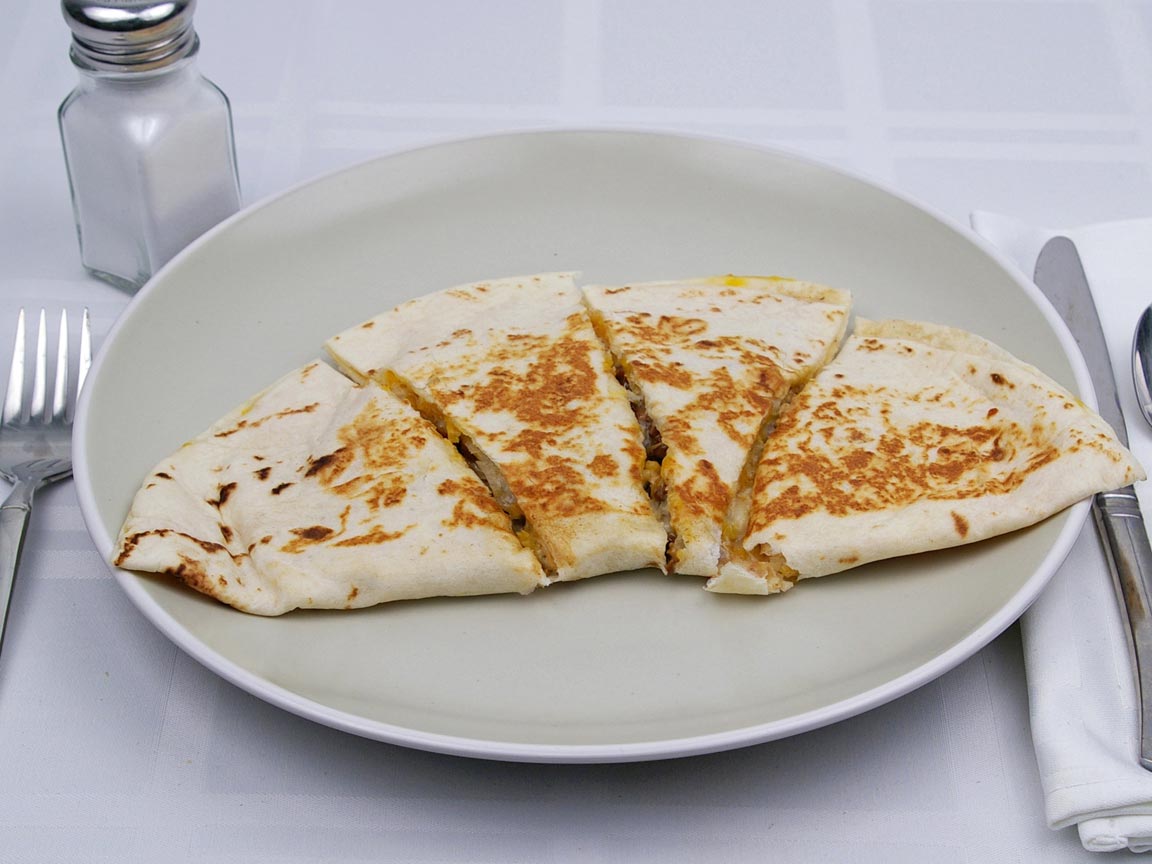
A Taco Bell chicken quesadilla is a popular fast-food menu item, known for its appealing blend of flavors and convenience. To understand calories in taco bell chicken quesadilla its caloric content, it’s essential to break down each component that makes up this dish and how they contribute to the total calorie count.
At the base of the quesadilla is the flour tortilla. This staple ingredient typically contributes between 150 and 200 calories. The calories are primarily derived from carbohydrates, which are a main source of energy. Each tortilla also provides about 5 grams of protein and 5 to 7 grams of fat. While the tortilla offers energy, it is relatively low in fiber compared to whole grain alternatives. This means it may have less impact on digestive health but is crucial for holding the quesadilla together and providing its characteristic texture.
The chicken, which is the main protein source, adds significant nutritional value to the quesadilla. Taco Bell’s chicken is seasoned and cooked to enhance its flavor. A serving of chicken typically adds around 150 to 200 calories. This portion contains approximately 15 to 20 grams of protein, which is essential for muscle repair, growth, and overall bodily functions. The chicken is usually prepared with minimal added fat, although it may include sodium and various seasonings that can affect its nutritional profile. In addition to protein, the chicken provides several B vitamins that are important for metabolism and energy production.
Cheese is another key ingredient in the quesadilla, contributing to its rich flavor and creamy texture. Taco Bell uses a blend of cheddar and mozzarella cheeses in their quesadillas. A serving of cheese generally adds about 100 to 150 calories, along with 7 to 10 grams of fat and 6 to 8 grams of protein. Cheese is a good source of calcium, which is important for bone health, and vitamin A, which supports vision and immune function. However, cheese also increases the saturated fat content of the quesadilla. Excessive intake of saturated fat can have adverse effects on cardiovascular health, making it important to consume it in moderation.
Additional ingredients, such as sauces and condiments, can further impact the total caloric content of the quesadilla. Taco Bell offers various sauces that can add extra calories, sodium, and sugars. For example, adding a serving of sour cream or guacamole will increase the calorie and fat content of the quesadilla. A serving of sour cream typically adds about 30 to 50 calories, while guacamole adds approximately 60 to 80 calories, depending on the portion size. These additions enhance the flavor but also contribute to the overall calorie count and should be considered when evaluating the nutritional profile of the dish.
On average, a Taco Bell chicken quesadilla contains between 500 and 600 calories. This caloric range can vary based on specific ingredients and portion sizes used. The quesadilla provides a mix of macronutrients, including proteins, fats, and carbohydrates, along with some essential vitamins and minerals. It is important to be aware of the sodium and fat content, particularly if the quesadilla is consumed frequently as part of a regular diet.
To make healthier choices, consider modifications such as reducing the amount of cheese, opting for grilled chicken instead of fried, or adding extra vegetables. Additionally, choosing lower-calorie sides or limiting high-calorie condiments can help manage overall calorie intake while still allowing for enjoyment of the quesadilla.
In summary, the caloric content of a Taco Bell chicken quesadilla is influenced by its tortilla, chicken, cheese, and any additional toppings. Understanding the contribution of each component helps individuals make informed dietary choices and enjoy this popular fast-food item as part of a balanced diet.